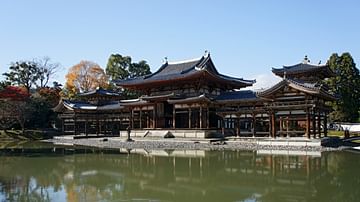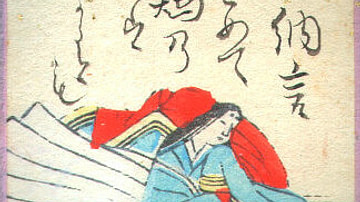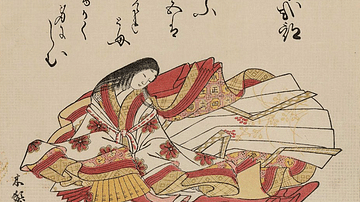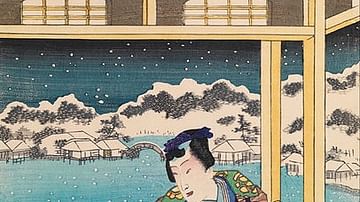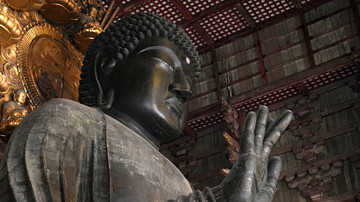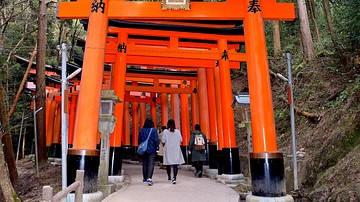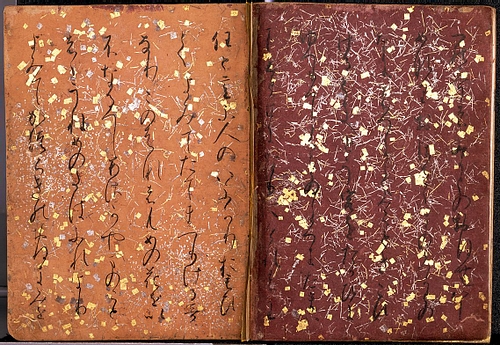
Ono no Komachi was a poetess of great renown during the Heian Period (794-1185 CE) of ancient Japan. The Kokinshu anthology, compiled in 905 CE, contains many of her poems, and her work and life inspired later writers of Noh drama. She is considered one of the rokkasen or Six Immortals of Poetry in Japan.
Biographical Details
Very little is known of Komachi's life except that she was perhaps born between 820 and 830 CE and was active in the mid-9th century CE. She was famous for her beauty and passion, she likely served at the court of Emperor Ninmyo (r. 833-850 CE), and her poems were a success in her own lifetime. Beyond this sparse information we know only some of the lovers Komachi addressed her poems to. Still, this has not prevented a myriad of legends being created about the poetess based loosely on some details within her poems. Indeed, by the 11th century CE, there were so many stories based on the figure of Komachi that some scholars have identified the object of the legends as actually four different women.
One of the most famous stories concerning Komachi is her rather harsh treatment of her admirer Fukakusa no Shosho. Komachi warned the would-be Romeo that he would have to visit her every night for 100 nights before she would submit to his charms. The poetess' beauty must indeed have been great for Fukakusa set about his task with determination and turned up each evening at Komachi's house in all weathers. Tragically, though, the strain proved too much and - so near, yet so far - Fukakusa died on the 99th night.
Other legends concern the writer's later life and hard times when, perhaps in comeuppance for her notoriously bad treatment of admirers, she lived to be 100 but roamed the streets ugly and dressed only in rags, the object of mockery from all who passed her. The life of the poetess and the legends which sprang up about her became a popular subject with writers of Noh drama from the 14th century CE onwards.
The Poems
Like those of her contemporaries, Komachi's poems often have a theme of sadness or mono no aware ('the sadness of things'). They deal with such subjects as lost love, unrequited love, loneliness, and the passing of time symbolised by changes in nature, especially fading blossoms and the changing colour of leaves in autumn.
The Kokinshu is an imperially commissioned anthology of poems with the full but less familiar title of Kokin Wakashu, meaning 'Collection of Ancient and Modern Waka Poems'. It was compiled by the poet Ki no Tsurayuki in 905 CE and contains 1,111 works in the waka form where each poem, written in Chinese, has 31 syllables divided into five lines of 5+7+5+7+7 syllables. The Kokinshu is our best source of the works of Ono no Komachi with 18 poems, and below are five examples which illustrate the poet's mix of passions and melancholy, as well as her use of words and phrase which are open to more than a single interpretation. The historian Donald Keene summarises Komachi's literary style in the following terms,
The intensity of emotion expressed in Komachi's poetry not only was without precedent but would rarely be encountered in later years. The poetry of the Kokinshu was usually pitched in a lower key, and the ingenious use of language was a mark not of overpowering emotion but of a kind of intellectuality. Komachi's poetry, however extravagant in expression, always seems sincere. (235)
The flowers withered
Their colour faded away,
While meaninglessly
I spent my days in brooding,
And the long rains were falling.
(Keene, 234)
This night of no moon
there is no way to meet him.
I rise in longing:
My breast pounds, a leaping flame,
my heart is consumed by fire.
(Keene, 235)
Ever since I saw
The man who is dear to me
While I was napping
I have begun to Believe
The things that people call dreams
(Keene, 1094)
In reality,
It may well have to be;
But even in my dreams
To see myself shrink from others' eyes
Is truly sad.
(Mason, 84)
So lonely am I
My body is a floating weed
Severed at the roots.
Were there water to entice me
I would follow it, I think.
(Keene, 235)
This content was made possible with generous support from the Great Britain Sasakawa Foundation.
